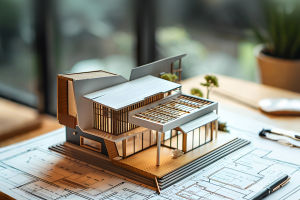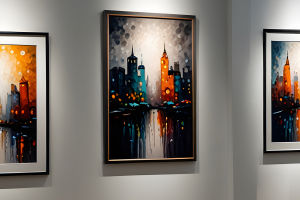Lykkers, imagine sketching a dream world, then watching an algorithm instantly paint it with impossible colors and textures.
From album covers to art gallery exhibitions, this captivating blend of human ingenuity and artificial intelligence is not only sparking inspiration but also launching a revolution in the art world.
This isn't sci-fi—it's today's AI art revolution, where brushes meet bytes to forge breathtaking new visual frontiers. Welcome to the thrilling collaboration reshaping creativity itself.
Defining AI Art
AI art isn't machine-made magic alone. It's a dynamic partnership. Artists set the vision—choosing styles, themes, or inputs—while artificial intelligence processes vast visual data to generate novel compositions. Think of it as a creative dialogue: the artist prompts, the AI interprets, and together they birth something uniquely unexpected.
True Collaboration
Forget cold automation. Successful AI art thrives on human guidance. Artists become digital directors, using tools to refine the AI's chaotic outputs. They select intriguing fragments, adjust parameters, and inject personal taste.
This iterative dance transforms random algorithmic patterns into intentional, emotionally resonant works, merging human intuition with machine scale.
Historical Seeds
The dream began long ago. Ada Lovelace, in the 1840s, foresaw machines creating beyond calculation.
Alan Turing's 1950 Turing Test questioned machine creativity. By the 1960s, pioneers like Manfred Mohr coded plotters to draw complex algorithmic shapes, planting the seeds for today's fusion of art and computation.
GANs Breakthrough
Everything changed with Generative Adversarial Networks (GANs). Invented in 2014, GANs pit two neural networks against each other: one generates images, the other critiques them. This "creative competition" rapidly improves output quality.
Alexander Mordvintsev's DeepDream (2015) revealed the surreal, dreamlike imagery AI could conjure, captivating artists globally.
Belamy's Landmark
AI art exploded into public consciousness in 2018. The auction house Christie's sold Portrait of Edmond de Belamy, a GAN-generated artwork mimicking Old Masters, for a staggering $432,500. This moment proved AI art had commercial and cultural value, sparking intense debate and inspiring a wave of creators.
Accessible Tools
Creating AI art no longer requires coding Ph.D.s. User-friendly platforms put power in everyone's hands:
WOMBO Dream turns text prompts ("cosmic jellyfish ballet") into vibrant artworks instantly.
DeepDream transforms photos into hallucinatory, pattern-filled visions.
NVIDIA GauGAN2 converts rough doodles into photorealistic landscapes with simple labels.
Code for Creatives
For tech-savvy artists, ml5.js offers an open-source playground. This JavaScript library simplifies accessing complex machine learning models. Artists can experiment with style transfer, image generation, and interactive installations using approachable code, democratizing advanced AI art creation.
Authentication Revolution
Beyond creation, AI transforms art verification. Swiss firm Art Recognition analyzes brushstrokes, pigments, and compositional patterns in high-res digital images. Their AI cast doubt on Rubens' Samson and Delilah, demonstrating how algorithms can detect subtle inconsistencies invisible to the human eye, fighting forgery with data.
Beyond the Canvas
AI art permeates culture. It designs mesmerizing album covers, generates unique fashion prints, and creates dynamic visuals for concerts. Video game worlds are populated with AI-crafted textures and characters. Architectural firms use it to visualize futuristic structures. Its influence is rapidly expanding.
Ethical Dimensions
This revolution isn't frictionless. Key questions arise: Who owns art derived from millions of scraped images? How should artists whose styles are replicated be credited or compensated? Ensuring ethical AI art requires developing fair data practices and transparent attribution models respecting human creators.
Future Visions
The horizon shimmers with potential. Imagine AI that learns an artist's unique style to become a true digital apprentice. Think of real-time collaborative tools where human and machine paint together on virtual canvases. AI art is evolving from a novelty into an indispensable, evolving creative partner.
Conclusion
Lykkers, AI art isn't replacing the artist; it's amplifying human imagination. These tools shatter creative limits, offering new ways to visualize the unseen and express the ineffable. Embrace this partnership. Experiment with a tool like WOMBO Dream today—type a wild idea and witness the machine's interpretation.
The future of art is a dazzling duet between human spirit and algorithmic power. Let's create it thoughtfully, together. What will you co-create next?


